-
4/22/2020:
I have been remiss not posting anything for a couple weeks. I did set up a Google Classroom for us. If I have missed anyone, or you are not yet a club member and wish to join us, please email me your name at ssherburne@newpaltz.k12.ny.us to ask me to add you. We are using school emails, not personal ones.
I hope you enjoyed some of the cherry blossom photos I put up last time. Cherry Blossom time is a BIG deal in Japan. People have hanami (ha-nah-mee) parties - blossom viewing parties. You can walk through parks and find many folks have put blankets on the ground and are having a picnic. Many city parks have food vendors - a festival atmosphere. Electric lanterns are often hung in the trees. I tried to find a place to buy ones like in the picture I had of Joyama in our sister city of Niimi to hang in my own tree.
One thing I like to do is go on Google Earth and "walk around" places that interest me, or that I am reading about. I encourage you to look at Maruyama Park in Kyoto, Kiyomizu-dera in Kyoto which is a famous temple and World Heritage Site.
Kiyomizu (Kee-yoh-mee-zoo) means Pure Water. It is one of the most celebrated temples of Japan. It was founded in 780 on the site of the Otowa Waterfall in the wooded hills east of Kyoto, and derives its name from the fall's pure waters. The temple was originally associated with the Hosso sect, one of the oldest schools within Japanese Buddhism, but formed its own Kita Hosso sect in 1965. In 1994, the temple was added to the list of UNESCO world heritage sites.
The Otowa Waterfall is located at the base of Kiyomizudera's main hall. Its waters are divided into three separate streams, and visitors use cups attached to long poles to drink from them. Each stream's water is said to have a different benefit, namely to cause longevity, success at school and a fortunate love life. However, drinking from all three streams is considered greedy.
These are pictures I took when I went to Kiyomizu-dera:
Japan is a Buddhist country, and well as Shinto. Both religions live side by side.

The famous view of the temple:
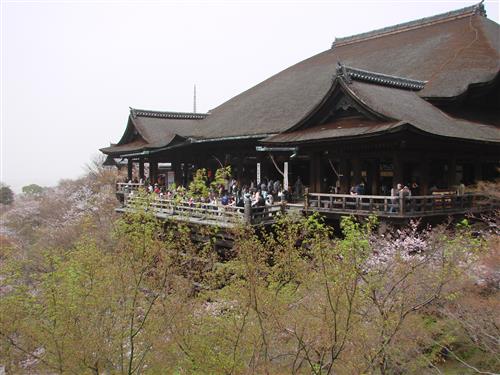
You will see a sprire sticking up over the left side of the temple. That is a pagoda near the entrance to the grounds. This is not the Koyasu Pagoda, which is seen from the main temple porch looking south.
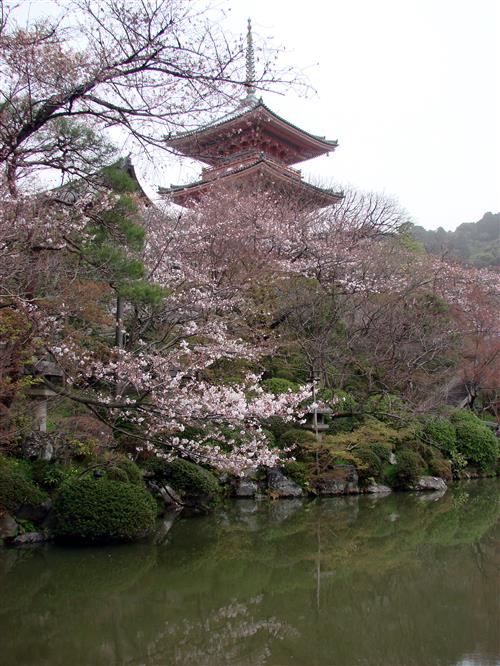
Otowa Waterfall:
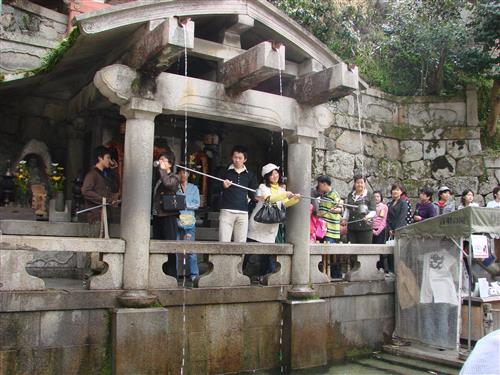
One thing that was unique and interesting is the Zuigudo Hall which is dedicated to Buddha's mother. Here you can go through a kind of maze in the pitch black basement. It was absolutely pitch dark and you wandered through with a hand on the wall. Inside you eventually reach a rock that is lit, that you touch. Then you are back in the darkness walking back out.
Buddhism:
You studied about Buddhism in Global Studies. Buddhism is a major world religion that started in India. https://www.pbs.org/edens/thailand/buddhism.htm explains that is was founded by Suddahrtha Gautama who was estimated to have lived between approximately 566 - 480 B.C. The teachings teach The Four Noble Truths: there is suffering, desire and ignorance cause suffering, we end suffering by ending desire, and we reach the Noble Truth. You learned to have good karma by good actions. We followed the Noble Eightfold Path. We wish to reach Nirvana.
Via the Silk Road, Buddhism makes it to China in the late 2nd or 1st century. It moves into Korea in the 4th century, and Japan in the 6th-7th centuries. Some temples in Japan have a lot of red and gold in their decor, although you will see that Kiyomizu is all wood. If you look on Google Earth, Kiyomizu was being refurbished with expectations to finish in March 2020, so Google may show it with scaffolding and contruction efforts.
Buddhism is not the only religion on China. It also suffered throughout the eyars to several periods of persecution. Today the government formally recognizes five religions: Buddhism, Taoism, Catholicism, Protestantism, and Islam (though the Chinese Catholic Church is independent of the Catholic Church in Rome). Of course, you also studied the beliefs of Legalism and Confusicianism, but these are not recognized as official religions. Also, bare in mind the role Communism played.
Korea is also not a one religion country. According to www.asiansociety.org, historically, Koreans lived under the influences of shamanism, Buddhism, Daoism or Confucianism and in modern times, the Christian faith has made strong in roads into the country, bringing forth yet another important factor that may change the spiritual landscape of the people. Today freedom of religion is guaranteed by the Constitution in Korea. According to a 1995 social statistics survey, 50.7 percent of Koreans follow a specific religious faith. Buddhists account for some 46 percent followed by Protestants at 39 percent and Catholics at 13 percent of the religious population. There is also an underlying religion of Shamanism. Korean shamanism includes the worship of thousands of spirits and demons that are believed to dwell in every object in the natural world,including rocks, trees, mountains and streams as well as celestial bodies.
Shintoism is a Japanese religion. Religion in Japan is dominated by Buddhism and Shintoism, but Christianity is also present. According to www.qcc.cuny.edu, the name Shinto, "the way of the gods", was created in the late 6th century for the native religion to distinguish it from Buddhism and Confucianism, which had been introduced from China. www.japan-guide.com says that kami are are sacred spirits which take the form of things and concepts important to life, such as wind, rain, mountains, trees, rivers and fertility. Humans become kami after they die and are revered by their families as ancestral kami. The kami of extraordinary people are even enshrined at some shrines. The Sun Goddess Amaterasu is considered Shinto's most important kami.
In contrast to many monotheistic religions, there are no absolutes in Shinto. There is no absolute right and wrong, and nobody is perfect. Shinto is an optimistic faith, as humans are thought to be fundamentally good, and evil is believed to be caused by evil spirits. Consequently, the purpose of most Shinto rituals is to keep away evil spirits by purification, prayers and offerings to the kami.
In Japan, Buddhism and Shintoism seem to exist side by side. The introduction of Buddhism in the 6th century was followed by a few initial conflicts, however, the two religions were soon able to co-exist and even complement each other. Many Buddhists viewed the kami as manifestations of Buddha. In the Meiji Period, Shinto was made Japan's state religion. Shinto priests became state officials, important shrines receive governmental funding, Japan's creation myths were used to foster a national identity with the Emperor at its center, and efforts were made to separate and emancipate Shinto from Buddhism.
Homes have Shinto alters, and there are many shrines. Many weddings are Shinto, most funerals are dealt with by Buddhism and there are almost no Shinto cemetaries. According to www.ikidane-nippon.com, torri gates are in front of shrines to ward of evil spirits, danger, and bad luck. According to www.japanobjects.com/features/shinto-shrines the must not miss shrines are: the Ise Grand Shrine in the city of Ise in Mie Prefecture, Fushimi Inari in Kyoto - this is the one you see with a row of torii, and Izumo Taisha considered to be the oldest shrine in existence in Izumo in Shimane Prefecture.
Fushimi Inari, Kyoto (picture from japanobjects.com)
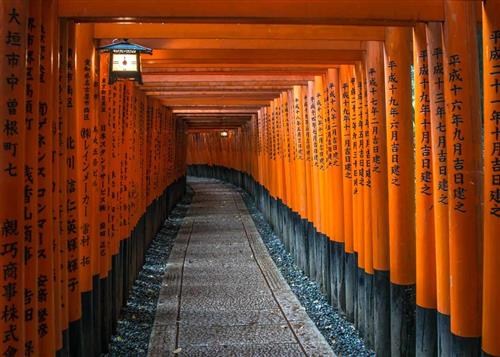
My friends in Japan seem to look to both. My host family the first time I went to Japan, who I consider my Japanese parents, talked about helping ring the temple bell on New Year's just after midnight. We visited Buddhist and Shinto shrines equally.
Sadly, my time in Kyoto was quite limited. There was so much I had no time to see such as Fushimi Inari, the Golden Temple, the Walk of the Philosophers, the emperor's palace, to name a few. One couple that was part of the sister-city delegation from New Paltz on that trip went a week earlier to go to the Toji Temple Flea Market. Well you could spend an afternoon there, and I was amazed at the finds they had made.
Walking around Kyoto was fun. We walked from the bus stop up to Kiyomizu and past facinating little shops, stopping in a little noodle shop for lunch. We got ice cream and this is not just your vanilla and chocolate: there was also cherry ice cream special for Cherry Blossom Time, green tea ice cream of course, and sesame ice cream. I was skeptical the first time I tried sesame because it is gray-black; I was thinking black licorice. No - it is a peanutty flavor and very good.
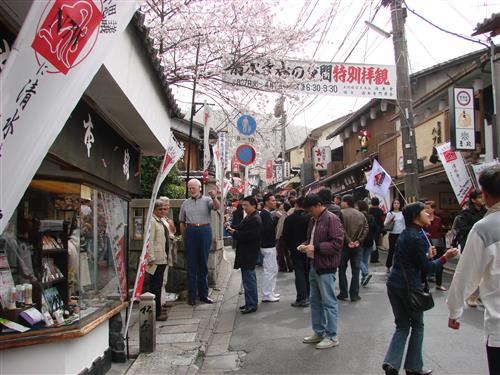
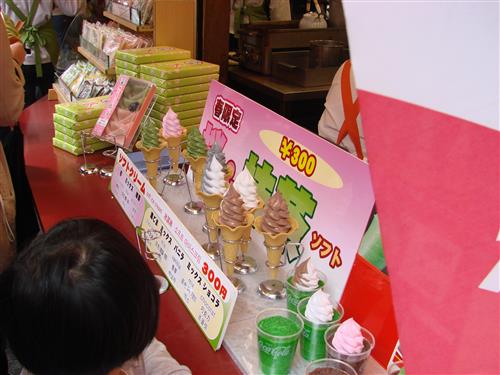
After we visited Kiyomizu, we walked to Chion-in, sometimes called the Vatican of Pure Land Buddhism. This vast temple is one of the most and popular temples in the city. It’s highly recommended by insidekyoto.com. I can tell you one thing, climbing all the step from the street will give you your exercise for a month. You know I am not the tallest person you know. It was all to do to go up one step due to the rise each step makes. Later I discovered a pathway that went at a gentle slope down the backside of the property!
You see this entrance from the street:
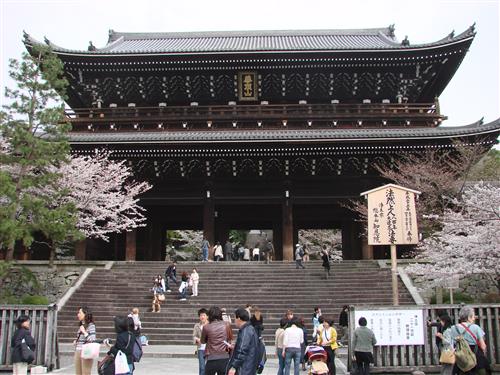
Then start up the steps inside:
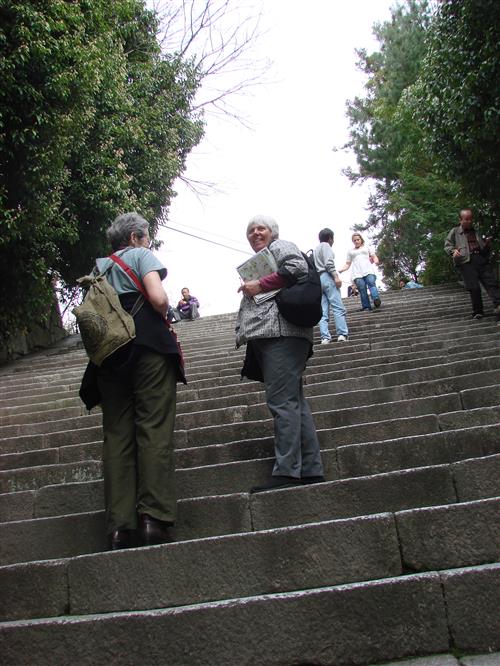
And we finally made it!
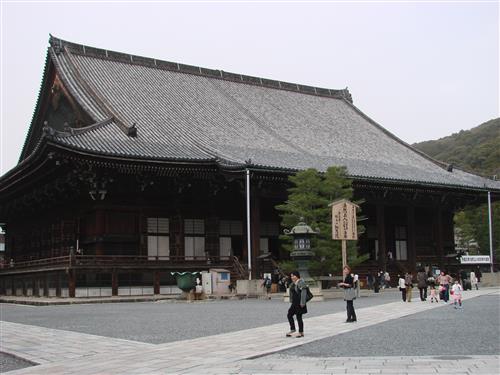
Lots to see in Kyoto like any big city! After Chion-in, we continued on to Maruyama Park, and then made our way back to our hotel to meet everyone for dinner.
Select a School...

